-
 Bitcoin
Bitcoin $108,017.2353
-0.81% -
 Ethereum
Ethereum $2,512.4118
-1.58% -
 Tether USDt
Tether USDt $1.0002
-0.03% -
 XRP
XRP $2.2174
-1.03% -
 BNB
BNB $654.8304
-0.79% -
 Solana
Solana $147.9384
-1.76% -
 USDC
USDC $1.0000
-0.01% -
 TRON
TRON $0.2841
-0.76% -
 Dogecoin
Dogecoin $0.1636
-2.09% -
 Cardano
Cardano $0.5726
-1.72% -
 Hyperliquid
Hyperliquid $39.1934
1.09% -
 Sui
Sui $2.9091
-0.59% -
 Bitcoin Cash
Bitcoin Cash $482.1305
0.00% -
 Chainlink
Chainlink $13.1729
-1.54% -
 UNUS SED LEO
UNUS SED LEO $9.0243
-0.18% -
 Avalanche
Avalanche $17.8018
-1.90% -
 Stellar
Stellar $0.2363
-1.69% -
 Toncoin
Toncoin $2.7388
-3.03% -
 Shiba Inu
Shiba Inu $0.0...01141
-1.71% -
 Litecoin
Litecoin $86.3646
-1.98% -
 Hedera
Hedera $0.1546
-0.80% -
 Monero
Monero $311.8554
-1.96% -
 Dai
Dai $1.0000
-0.01% -
 Polkadot
Polkadot $3.3473
-2.69% -
 Ethena USDe
Ethena USDe $1.0001
-0.01% -
 Bitget Token
Bitget Token $4.3982
-1.56% -
 Uniswap
Uniswap $6.9541
-5.35% -
 Aave
Aave $271.7716
0.96% -
 Pepe
Pepe $0.0...09662
-1.44% -
 Pi
Pi $0.4609
-4.93%
how to create bitcoin wallet address
To create a Bitcoin wallet, choose a type (software: desktop, mobile, web; hardware; or paper). Securely store your private keys and enable two-factor authentication for enhanced protection against theft or loss.
Mar 20, 2025 at 03:09 pm
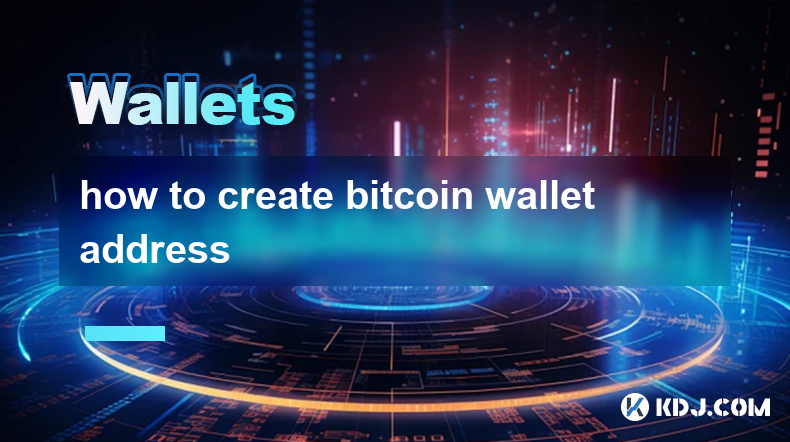
Tutorial on creating a Bitcoin wallet address
1. Choose the Bitcoin wallet type(I) Software wallet
Desktop wallet :
Bitcoin Core is a typical example of desktop wallets. When downloading the installation package from the official website, you must carefully identify the official website logo to avoid downloading malicious tampering versions. The installation process is relatively simple, just follow the prompts. After the installation is completed, the initial operation will face blockchain data synchronization, which is a time-consuming process because you need to download a large amount of historical transaction data and you need to wait patiently. Its advantage is that it has absolute control over private keys, is highly privacy-friendly, and is suitable for users who focus on security and do not frequently operate Bitcoin. However, it is necessary to manually back up wallet data to external storage devices regularly to prevent data loss such as computer hard disk failure.
Mobile wallet :
Blockchain, Electrum Mobile, etc. can be searched and downloaded in major mobile app stores. After installing it for the first time, you need to set a high-strength password. The password should include letters, numbers and special characters as long as possible, and the length is more than 8 digits. Some mobile phone wallets support fingerprint unlocking, which is convenient and fast and has a high security factor. Mobile wallets are convenient for viewing Bitcoin assets and conducting transactions anytime, anywhere. However, once the phone is lost and if sufficient security protection is not enabled, the wallet is at risk of being stolen. Therefore, it is necessary to enable two-factor authentication (such as SMS verification code + password). You can also set the face or fingerprint of the wallet application to re-enter the password at a certain interval after unlocking it, further improving security.
Web wallet :
Take MyEtherWallet as an example, accessed through a browser. When entering the URL, you must ensure that the URL is correct. You can verify the URL information through official channels to prevent being misled by phishing websites. The web wallet does not need to be installed, it can be used as long as it has a network connection and a browser, which is convenient for quick login operation on different devices. However, its security is relatively weak, and the private key is stored on the web page and is vulnerable to cyber attacks. It is recommended to use it only in a network environment that you are familiar with and secure, such as a home network, and you need to modify your password regularly, and the password setting is also complicated. At the same time, don't store a lot of bitcoin in your web wallet just in case.
(II) Hardware wallet
(III) Paper wallet
2. Specific steps for creating a wallet (taking the common mobile wallet Blockchain as an example)
Search for "Blockchain" in the mobile app store, identify the official icon, click Download and wait for the installation to be completed.
Open the Blockchain app, find the "Create a new wallet" option in the initial interface and click.
Then enter the password setting process and set a complex and easy-to-memorize password, which meets the requirements of containing letters, upper and lowercase letters, numbers, special characters and length of more than 8 digits. After the setting is completed, the system will require the password to be confirmed again.
The password is confirmed correctly, and the wallet will generate mnemonic words, which are phrases composed of 12 or 24 words. At this time, be sure to hold a pen and paper and record it accurately in order. This is the key information for restoring your wallet. It is strictly forbidden to transmit mnemonic words through the Internet, such as sending them to email, WeChat, etc., and do not take screenshots and save them in mobile phone albums and other places that may be hacked.
After recording the mnemonic words, the application will randomly select several mnemonic words and ask you to confirm again in order. After confirming that the wallet is successfully created.
Enter the main wallet interface, find the "Receive" option in the interface and click to enter. The long string composed of numbers and letters displayed here is your Bitcoin wallet address. You can click the copy icon next to the address to facilitate sending the address to others for receiving Bitcoin transfers.
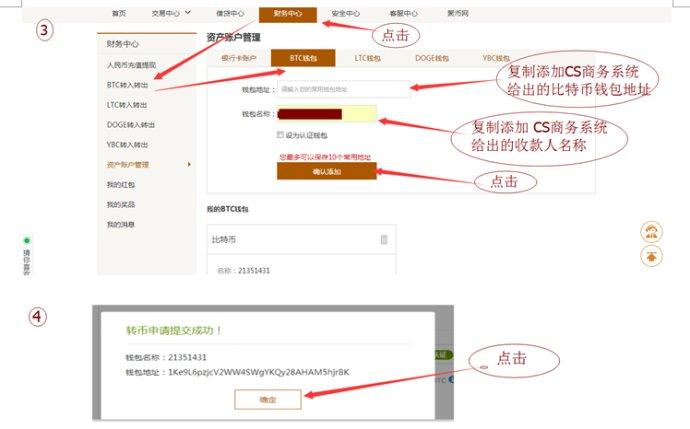
3. Backup wallet
(I) The importance of backup
(II) Backup method
Mnemonic word backup :
Just like creating mnemonics generated by Blockchain wallets, it is the most commonly used backup method. The mnemonics are neatly copied on paper, and several copies are copied, and stored in different safe places, such as hidden places in different rooms at home, office filing cabinets, etc. The storage area should be dry, fire-proof and insect-proof to ensure that the paper is well preserved for a long time. Regularly check whether the mnemonic paper is damaged and whether the handwriting is clear.
Wallet file backup :
For desktop wallet Bitcoin Core, wallet data is stored in a specific file. On Windows systems, it is usually in the AppData folder in the user directory; on Mac systems, it is in the Library/Application Support folder. Find the folder where the wallet file is located and copy the entire folder to external storage devices such as mobile hard disks and USB disks. After the backup is completed, connect the backup device to the computer regularly, open the backup file and check whether it can be read normally, and ensure that the backup is valid. When restoring the wallet, copy the backup file back to its original location, or follow the recovery operation instructions of the wallet software.
4. Protect the security of your wallet
(I) Set up a strong password
(II) Enable two-factor authentication
(III) Beware of phishing
(IV) Avoid public network use
(V) Keep software updated
Disclaimer:info@kdj.com
The information provided is not trading advice. kdj.com does not assume any responsibility for any investments made based on the information provided in this article. Cryptocurrencies are highly volatile and it is highly recommended that you invest with caution after thorough research!
If you believe that the content used on this website infringes your copyright, please contact us immediately (info@kdj.com) and we will delete it promptly.
- PEPE, BONK, and Remittix: Meme Coins Meet Real-World Utility
- 2025-07-06 02:30:13
- PENGU Token's eToro Debut and Weekly Surge: What's Driving the Hype?
- 2025-07-06 02:30:13
- Royal Mint Coins: Unearthing the Rarest Queen Elizabeth II Treasures
- 2025-07-06 00:30:12
- BlockDAG, SEI, and HYPE: Decoding the Crypto Buzz in the Big Apple
- 2025-07-06 00:50:13
- Uniswap in a Bear Market: Price Analysis and What's Next
- 2025-07-06 01:10:13
- Arctic Pablo Price Hike: Is Housecoin Feeling the Chill?
- 2025-07-06 00:30:12
Related knowledge
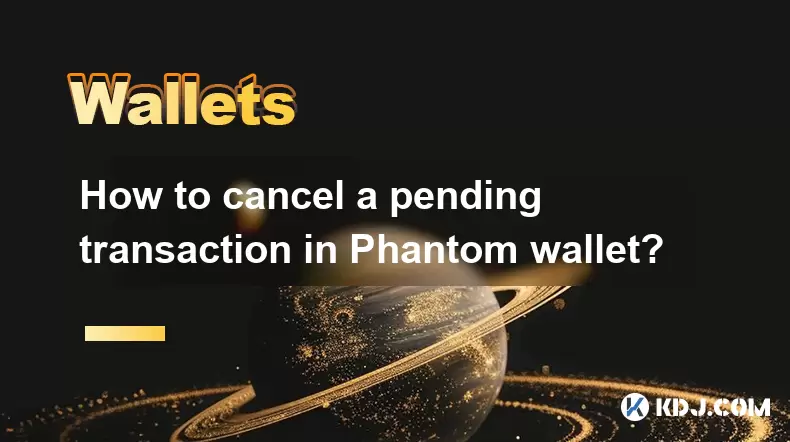
How to cancel a pending transaction in Phantom wallet?
Jul 03,2025 at 07:21pm
Understanding Pending Transactions in Phantom WalletA pending transaction in the Phantom wallet occurs when a user initiates a transfer or interaction with the Solana blockchain, but it hasn't yet been confirmed by the network. This can happen due to various reasons such as low transaction fees, network congestion, or incorrect gas settings. It's import...
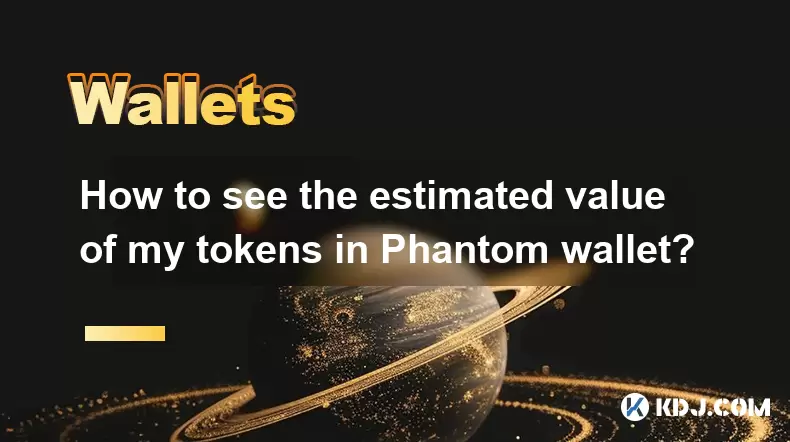
How to see the estimated value of my tokens in Phantom wallet?
Jul 04,2025 at 12:21am
What is Phantom Wallet?Phantom wallet is one of the most popular cryptocurrency wallets designed for the Solana blockchain. It allows users to store, send, receive, and manage various tokens built on Solana, including SPL tokens and NFTs. The wallet offers a user-friendly interface, making it accessible for both beginners and advanced users in the crypt...

How to lock my Phantom wallet extension?
Jul 03,2025 at 11:14am
What Is the Phantom Wallet and Why Lock It?The Phantom wallet is a popular non-custodial cryptocurrency wallet designed for interacting with the Solana blockchain. Supporting both browser extensions and mobile apps, Phantom allows users to store, send, receive, and stake SOL tokens, as well as interact with decentralized applications (dApps). Securing y...

Does Phantom wallet offer two-factor authentication (2FA)?
Jul 03,2025 at 09:00am
Understanding Phantom Wallet and Its Security FeaturesPhantom wallet is a widely used non-custodial cryptocurrency wallet that supports the Solana blockchain. It allows users to store, send, receive, and interact with decentralized applications (dApps) seamlessly. As security is a top priority for any crypto wallet user, security features like two-facto...

What is "rent" on Solana and how does it affect my Phantom wallet?
Jul 02,2025 at 08:35pm
Understanding 'Rent' on SolanaIn the context of Solana, the term 'rent' refers to a storage fee that users pay for maintaining data on the blockchain. Unlike Ethereum, where storage costs are paid once via gas fees during contract deployment, Solana implements a recurring cost model to ensure efficient usage of network resources. This means that any acc...
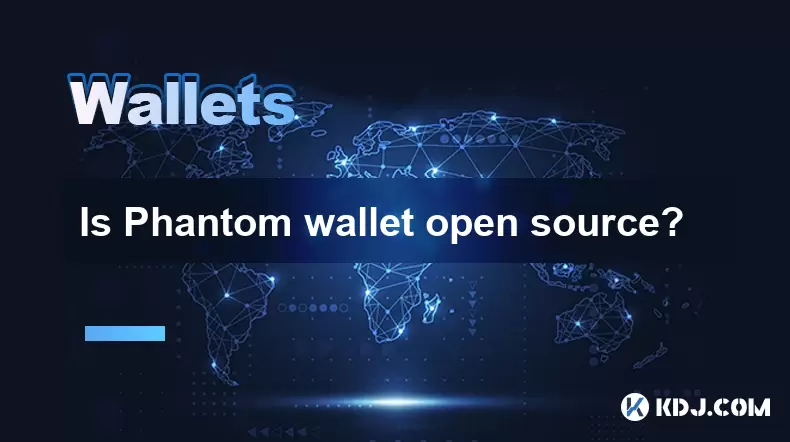
Is Phantom wallet open source?
Jul 03,2025 at 12:29am
What is Phantom Wallet?Phantom wallet is a non-custodial cryptocurrency wallet primarily designed for the Solana blockchain. It allows users to store, send, receive, and interact with decentralized applications (dApps) on the Solana network. The wallet is available as a browser extension and mobile application, offering a seamless experience for both be...

How to cancel a pending transaction in Phantom wallet?
Jul 03,2025 at 07:21pm
Understanding Pending Transactions in Phantom WalletA pending transaction in the Phantom wallet occurs when a user initiates a transfer or interaction with the Solana blockchain, but it hasn't yet been confirmed by the network. This can happen due to various reasons such as low transaction fees, network congestion, or incorrect gas settings. It's import...

How to see the estimated value of my tokens in Phantom wallet?
Jul 04,2025 at 12:21am
What is Phantom Wallet?Phantom wallet is one of the most popular cryptocurrency wallets designed for the Solana blockchain. It allows users to store, send, receive, and manage various tokens built on Solana, including SPL tokens and NFTs. The wallet offers a user-friendly interface, making it accessible for both beginners and advanced users in the crypt...

How to lock my Phantom wallet extension?
Jul 03,2025 at 11:14am
What Is the Phantom Wallet and Why Lock It?The Phantom wallet is a popular non-custodial cryptocurrency wallet designed for interacting with the Solana blockchain. Supporting both browser extensions and mobile apps, Phantom allows users to store, send, receive, and stake SOL tokens, as well as interact with decentralized applications (dApps). Securing y...

Does Phantom wallet offer two-factor authentication (2FA)?
Jul 03,2025 at 09:00am
Understanding Phantom Wallet and Its Security FeaturesPhantom wallet is a widely used non-custodial cryptocurrency wallet that supports the Solana blockchain. It allows users to store, send, receive, and interact with decentralized applications (dApps) seamlessly. As security is a top priority for any crypto wallet user, security features like two-facto...

What is "rent" on Solana and how does it affect my Phantom wallet?
Jul 02,2025 at 08:35pm
Understanding 'Rent' on SolanaIn the context of Solana, the term 'rent' refers to a storage fee that users pay for maintaining data on the blockchain. Unlike Ethereum, where storage costs are paid once via gas fees during contract deployment, Solana implements a recurring cost model to ensure efficient usage of network resources. This means that any acc...

Is Phantom wallet open source?
Jul 03,2025 at 12:29am
What is Phantom Wallet?Phantom wallet is a non-custodial cryptocurrency wallet primarily designed for the Solana blockchain. It allows users to store, send, receive, and interact with decentralized applications (dApps) on the Solana network. The wallet is available as a browser extension and mobile application, offering a seamless experience for both be...
See all articles

























































































